Most Recent Posts

What to Do in Kaohsiung || Your Ultimate 2025 Guide
Discover the best things to do in Kaohsiung, Taiwan. From island parties to night markets to art piers, we've got you covered with our detailed…

Why Should I Learn Chinese in Taipei in 2025 // 7 Top Reasons
Why Learn Chinese in Taiwan? Chinese is becoming THE language to study with mainland China and Taiwan's economic growth expanding rapidly.

Moving to Taipei || A Guide By Those Who Made The Move
Moving anywhere in the world can be a big task. Depending on where you come from, moving to Taiwan may create a big distance between…

6 Top Taipei Breakfast Foods To Start Your Morning Right 🤤
Taipei Breakfast Food Worth Getting Up For (Thank Us Later) Breakfast food is a big part of Taipei food culture, and definitely something that is…

Why Learn Mandarin in 2025? The Investment Your Career Needs
Why Learn Mandarin || Whether you’re aiming for a promotion, or preparing to pivot... taking time out to learn a new language can be the…

Ultimate Guide to Chinese 👩🏼💻 Best Way to Learn Mandarin Online
Best Way to Learn Mandarin Online || There are just so many resources for learning Chinese online, but don't worry, this is your ultimate go…
Learn Chinese
More »
Chinese Numbers | The Ultimate Guide (PLUS Free Quiz Inside)
The Most Comprehensive Online Guide for Counting in Chinese & Talking About Numbers Chinese Numbers are one of the first things you’ll study when learning…

Traditional Chinese Characters List 🀄 The 100 Most Common (WITH FREE QUIZ)
There are literally thousands of characters so today we're going to start off with a list of the 100 most common Traditional Chinese characters.

Chinese Phone Calls ☎️ How To Be A Pro On The Phone
Making phone calls in Mandarin can be intimidating, as native speakers tend to speak very fast. Here is our guide to becoming a pro and…

Taiwanese Mandarin vs. Mainland Mandarin || KEY DIFFERENCES
Speak Like a Local Taiwanese by Using this List of Must-Know Taiwanese Mandarin Vocabulary Taiwan’s official language is Mandarin Chinese. However, if you’ve ever learnt…

22 Chinese Colors And Meanings | PLUS Free Quiz
Want to learn about Chinese Colors and their meanings? Learn the meanings of the colors, lucky chinese colors and their meanings.

From Ancona to Taipei || An LTL School Trip to Remember
In March 2023, we were lucky enough to welcome 19 fresh faced students from the coastal city of Ancona in Italy. See how they got…
Culture
More »
Double Ninth Festival in China || Origins & History of Chongyang Festival
The Ultimate Guide to the Double Ninth Festival || 2024 Date The Double Ninth festival is an important festival not only in China but also…

Ghost Month and Zhong Yuan Festival | Discover Taipei Traditions
Ghost Month & Zhong Yuan Festival takes place in the entirety of the July of the lunar calendar. Find out what it is and when…

Bubble Tea || What Exactly is Boba? Your Complete Guide
Bubble tea, Boba, bubble milk tea, bubble pearl tea, tapioca ball tea, boba nai cha, tapioca pearl drink, Taiwan bubble tea... Call it what you…
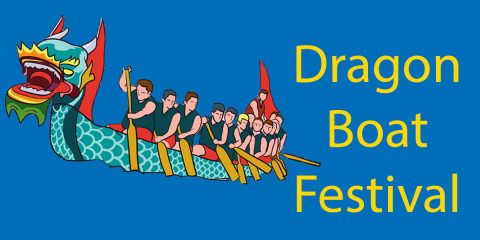
Dragon Boat Festival in Taipei || The Complete Guide 🐉
The Dragon Boat Festival 端午节 (duān wǔ jié), also called Double Fifth Festival, is celebrated on the fifth day of May of the lunar calendar.

Yanshui Beehive Fireworks Festival || The Most Dangerous Festival in the World?
Your Ultimate Guide to the Yanshui Beehive Fireworks Festival in Taiwan: Expect the Unexpected The Yanshui Beehive Fireworks Festival has been given the title of…

Qixi Festival Explained❤️ Valentine's Day and a Forbidden Love
Love is in the air! The so-called Chinese Valentine’s Day is coming. In Taiwan, it is better known as Qixi Festival (七夕) or Qixi Valentine’s…
Living in Taiwan
More »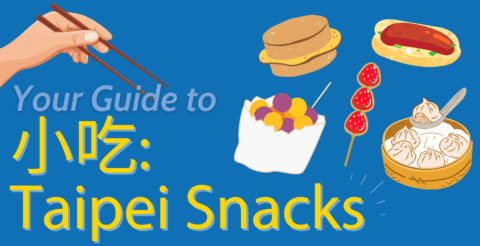
小吃 (Xiǎochī) The Best Taipei Snacks🤤 Vegan & Veggie Included!
Taiwan is certainly well-known for its abundance of yummy foods. But what are the best Taiwan snacks? We reveal all (for vegans and veggies too).

Vegan Food in Taipei || Discover The Best Vegan Eats
Finding vegan food in Taiwan is easier than you think, and the great thing? It's only getting easier. Here is our complete guide to being…

Witnessing a 6.8 Magnitude Earthquake in Taipei
Earthquakes in Taiwan aren't uncommon but a strong earthquake is quite a surprise for Taiwanese population. Today we give our account of a recent earthquake.
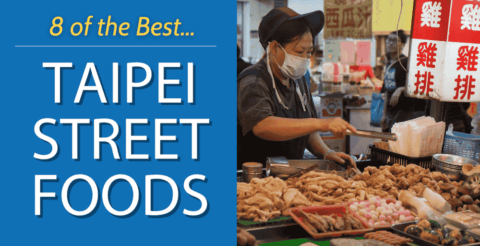
The Ultimate Taipei Street Food To Try: 8 You Can't Miss
Taiwanese street food is world famous. Its day and night street food markets are a popular attraction both for tourists and locals.
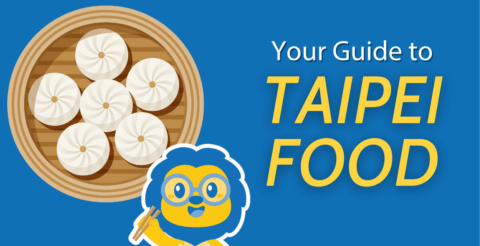
Food in Taipei || Top 6 Foods You Simply Cannot Miss
Food in Taiwan is full of flavour and variety. Using a base of noodles and rice, with strong flavours and lots of meat (mainly beef…

Taipei 7-Eleven ❤️ Your Insider's Guide + Things You Never Knew
Taiwan 7-Eleven is a unique feature of life in Taiwan, and a great one-stop-shop for visitors and locals with a huge range of products and…
Travel Taiwan
More »
Weird and Fun Things to do in Taipei (for 2024)
If you’re looking for the quirkier side of Taiwan’s capital, we’ve got you covered with our top 10 guide of alternate and fun things to…
![11 Steps to Pass the Scooter License in Taipei [2025 Guide] | Taipei Scooter License Test Thumbnail](https://ltl-taiwan.com/wp-content/sites/6/2023/11/How-to-get-your-Taiwan-scooter-license-1-480x246.png)
11 Steps to Pass the Scooter License in Taipei [2025 Guide] | Taipei Scooter License Test
Getting a scooter license in Taiwan was not an easy journey. Both in terms of the bureaucracy, you have to deal with, as well as…
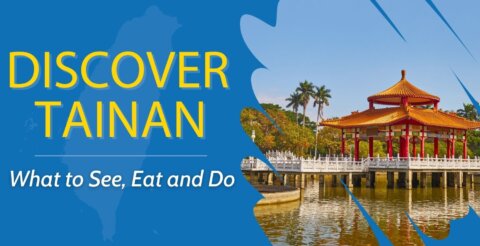
Discovering Tainan's Treasures: 9 Must-Visit Places in This Historical City
Tainan is the oldest city in Taiwan and is teeming with history and culture. Here's our ultimate guide on where to go and what to…

Summer Camp in Taipei || A Complete Rundown Of Our Best Camp Yet
In this post, we give you a complete rundown on what we did, what our students thought and include plenty of pictures and videos along…

Things to Do in Taipei (2024 Update) | The Complete Guide
This is a must-visit city. Taipei is incredibly relaxed, very friendly, and boasts some rather incredible food across the city.

Everything You Need to Know to Prepare for Climbing Yushan in 2025 || PLUS How to Get the Yushan Permit
Reaching New Heights: Conquering Yushan, the Island’s Tallest Summit Yushan is also known as Mt. Yushan, Yushan Mountain, Yu Shan, Yu Mountain, Jade Mountain, or…
Pass the HSK
More »![How To Pass HSK 1 // Your Complete Guide [Update 2024] Thumbnail](https://ltl-taiwan.com/wp-content/sites/6/how-to-pass-hsk1-480x246.jpg)
How To Pass HSK 1 // Your Complete Guide [Update 2024]
The HSK 1 test is the first of six levels of the written HSK exam. But how to pass the HSK 1 exam? Here are…
![How To Pass HSK 2 // Your Complete Guide [Update 2024] Thumbnail](https://ltl-taiwan.com/wp-content/sites/6/hsk2-pass-how-480x246.png)
How To Pass HSK 2 // Your Complete Guide [Update 2024]
The HSK 2 test is the 2nd of six levels of the written HSK exam. But how to pass the HSK 2 exam? Here are…
![How To Pass HSK 3 // Your Complete Guide [Update 2024] Thumbnail](https://ltl-taiwan.com/wp-content/sites/6/pass-hsk-3-480x246.png)
How To Pass HSK 3 // Your Complete Guide [Update 2024]
How do you pass HSK 3 with flying colours? That's what we'll be teaching you today. Follow these top tips, tricks and hacks to discover…
![How To Pass HSK 5 // Your Complete Guide [Update 2024] Thumbnail](https://ltl-taiwan.com/wp-content/sites/6/pass-hsk-5-480x246.png)
How To Pass HSK 5 // Your Complete Guide [Update 2024]
Today we give provide you with all the ammunition you need and answer the most common questions on how to pass the HSK 5 (with…
![How To Pass HSK 4 // Your Complete Guide [Update 2024] Thumbnail](https://ltl-taiwan.com/wp-content/sites/6/how-to-pass-hsk-4-480x246.png)
How To Pass HSK 4 // Your Complete Guide [Update 2024]
Discover these tips, tricks and hacks and pass the HSK 4 with flying colours. Our students boast a 95% pass rate with all HSK exams,…

 Hi, my name is Greta. I am from Italy and I work as a student advisor at our Taipei school.
Hi, my name is Greta. I am from Italy and I work as a student advisor at our Taipei school. Hi, my name is Manuel! I am from Spain and I am a Student Advisor at LTL. I’m now based at our Seoul School after living 3 years in Taipei.
Hi, my name is Manuel! I am from Spain and I am a Student Advisor at LTL. I’m now based at our Seoul School after living 3 years in Taipei.